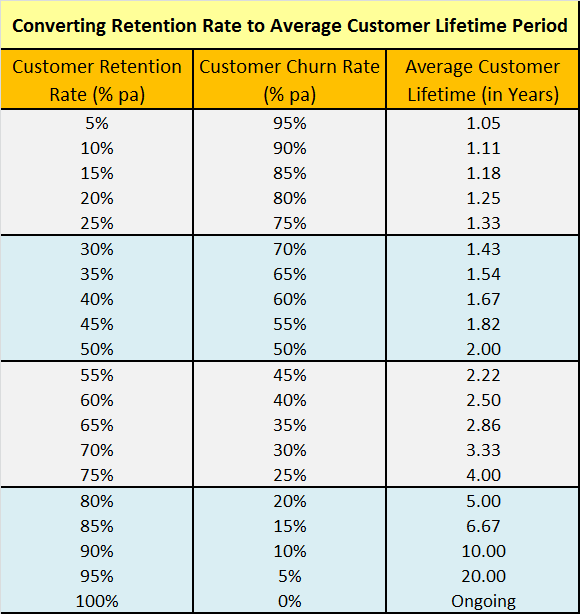From Retention Rate to Customer Lifetime (in years)
When calculating customer lifetime value using the simple formula, one of the key components is the average number of years that the customer (or the average customer within that segment) will remain a customer of the firm/brand.
Without a detailed customer analysis that extends back in time, it is often difficult to estimate customer lifetime in years. Obviously, a relatively new business will generally only have broad assumptions in this regard.
Loyalty or retention rate however, it is much easier to determine – as you simply compare the numbers of customers dealing with you in year one and see what percentage continued as customers in year two. This is also relatively easy to calculate on a segment basis as well.
Once we have a loyalty/retention rate, it is very easy to calculate the average customer lifetime in years. The customer lifetime value template available on this website does this automatically and relies upon the input of the retention percentage rate. There is also a quick ready reckoner in the table below that converts customer retention rate to lifetime in years.
The conversion formula is quite straightforward, as follows:
1 divided by Churn (loss) rate %
(Where the Churn (loss) rate % = 1 – Loyalty rate %)
An example of converting the customer retention rate to the average customer lifetime period
If a firm has a 60% loyalty rate, then their loss or churn rate of customers is 40% (Note: These two rates always add to 100%.)
Customer lifetime value period can be calculated as 1 /40% = 2.5 years.
In this case, the average customer remains a customer of the firm/brand for 2.5 years. Keep in mind that some customers will remain for many, many years, while others will be very short term customers.
Reference table for converting customer retention rate to customer lifetime period in years
Related topics

